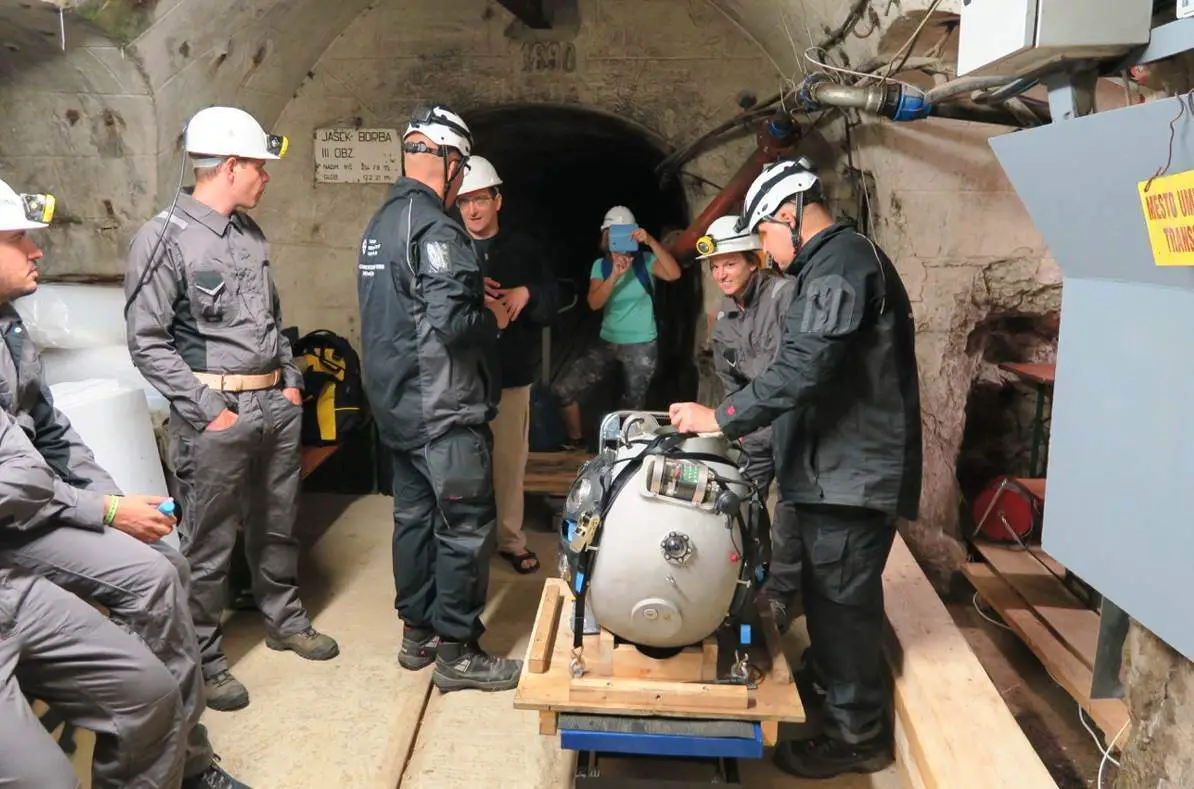An international team of researchers, including researchers from Universidad Politécnica de Madrid (UPM), is developing a new tool that will allow researchers to explore and assess mines in order to find out if it is economically viable to re-open them.
The Centre for Automation and Robotics (CAR), a joint center of UPM and CSIC, is involved in the UNEXMINEuropean project to develop an autonomous underwater robot that explores abandoned mines, many of them more than one century ago. The geological information collected by onboard devices along with the tunnel maps rebuilt by the robots is essential to decide if it is economically viable to reopen these mines.
There are around 30,000 closed mine sites across Europe, many of them can have valuable raw materials. Europe has an almost complete dependency on the import of mineral raw materials and some of these materials are in high demand. However, these mines are currently flooded and their latest status information is from various decades ago.
The closure of these mines was commonly related to technological challenges more than the actual presence of mineral resources. Most of these old mine sites are nowadays flooded, and the information available regarding the structural layout of the tunnels is limited or imprecise. In addition, exploration by human divers is ruled out due to the risks involved, and de-watering without a priori knowledge of the mineralogical composition is impossible because of its high costs.
In the Prometeus movie by Ridley Scott (2012), explorers land on the LV-233 planet and find strange alien structures, then they release spherical drones to rebuild a structural mapping and detect potential risks. Once they have the map, they are able to move safely throughout the unknown structure.
The aim of the UNEXMIN project is to design and develop similar drones but, in this case, for underwater use” Claudio Rossi, a CAR-UPM-CSIC researcher involved in this project explains.
UNEXMI drones will explore strange and unknown structures, that is, flooded underground landmines. The first underwater robot developed in this project, called “Robotic Explorer” (UX-1a), is able to autonomously navigate in the complex tunnels of these mines and rebuild a map of the structures to assess their composition and the possible presence of raw materials.
The spherical shaped robot provides higher stability and less risk in the tunnels. This robot is equipped with five digital cameras and rotating laser line projectors for structured light systems. It is also equipped with a multispectral camera, a unit for measuring gamma radiation and a water sampling system.
“From a technological point of view, this project is facing three main challenges: the first one is to build a robot which is able to work in real underwater environment up to 500 meters (it has been already tested in mines located in Finland, Slovenia, and Portugal). The second challenge is to achieve autonomous navigation in unknown environment, since there is no communication with the outside, and finally, the third challenge is to develop ad-hoc scientific instrumentation to assess the geophysical information” Rossi explains.
Universidad Politécnica de Madrid
Header Image – The UX-1a prototype ready to be released during the field tests in the mine from Idrija (Slovenia). Credit: UNEXMIN project





